MDB vs Pulse vs Marshall – Cashless Payment Interfaces for Vending, Arcade, and Amusement Equipment
Introduction
Cashless credit card readers have become the standard across vending machines, arcade cabinets, pinball games, and crane/claw machines. To ensure compatibility and efficiency, it's essential to understand the core interface types: MDB, Pulse, and Marshall.
This guide compares these standards and introduces cashless hardware options from VapeTM and Kiosoft, trusted providers of plug-and-play payment solutions.
1. MDB (Multi-Drop Bus)
MDB is the vending industry’s most widely adopted protocol. It supports secure, two-way digital communication between machines and devices like credit card readers, bill validators, and telemetry units.
Advantages:
- Encrypted communication for secure transactions
- Full telemetry support for sales, inventory, and diagnostics
- Multiple peripheral support (cashless, coin, bill, etc.)
Drawbacks:
- Requires compatible MDB controller or adapter for non-vending equipment
- More complex to set up compared to Pulse
Best Use Cases:
Modern vending machines, telemetry-integrated amusement systems, and compliant POS setups.
VapeTM & Kiosoft MDB Options:
- VapeTM: Integrated MDB kits with Nayax VPOS Touch readers, telemetry, and backend monitoring
- Kiosoft: MDB-compliant contactless readers for laundry and unattended retail
2. Pulse Interface
Pulse is a simple signal-based protocol that mimics coin inputs. Widely used in arcade and amusement machines, Pulse is easy to wire and doesn’t require digital communication.
Advantages:
- Low-cost, easy installation
- Compatible with virtually any coin-operated device
- Perfect for retrofitting older arcade machines
Drawbacks:
- No telemetry, pricing control, or feedback communication
- No built-in security for payments
Best Use Cases:
Pinball machines, claw cranes, kiddie rides, and traditional arcade games.
VapeTM & Kiosoft Pulse Solutions:
- VapeTM: Pulse-to-MDB converters + Nayax VPOS Touch integration for arcades
- Kiosoft: Pulse-based reader modules designed for amusement kiosks
3. Marshall / Proprietary Interfaces
Marshall refers broadly to proprietary payment interfaces used in amusement ecosystems like Intercard or Embed. These systems offer advanced user tracking and multi-terminal support.
Advantages:
- Support for loyalty programs, player tracking, and networked game centers
- Deep game integration (e.g., ticket balance, session control)
- Custom configurations per business type
Drawbacks:
- Proprietary hardware lock-in
- Not universally supported
- Higher initial setup cost
Best Use Cases:
Family Entertainment Centers (FECs), arcade chains, and locations with loyalty card ecosystems.
VapeTM & Kiosoft in Proprietary Setups:
- VapeTM: Offers MDB/Pulse-to-proprietary bridge solutions with support from Nayax APIs
- Kiosoft: Integrates with select custom systems using hybrid payment boards
Interface Comparison Table
| Feature | MDB | Pulse | Marshall |
|---|---|---|---|
| Communication Type | Two-way Digital | One-way Signal | Two-way (Custom) |
| Setup Complexity | Medium | Low | High |
| Machine Compatibility | High (vending) | High (amusement) | Moderate (closed ecosystems) |
| Telemetry & Reporting | Yes | No | Varies |
| Security/Encryption | Yes | No | Sometimes |
| Works with VapeTM | ✔️ | ✔️ | ✔️ (with bridge) |
| Works with Kiosoft | ✔️ | ✔️ | ✔️ (custom setups) |
Conclusion
The right interface for your cashless reader depends on machine type, business model, and feature needs. For vending or telemetry-intensive use, MDB is ideal. For arcades and retro equipment, Pulse offers simplicity. For loyalty and player-focused environments, Marshall/proprietary solutions are suitable.
Both VapeTM and Kiosoft offer robust hardware and integration support for all three interface types. Whether you're upgrading a single machine or outfitting a full amusement center, you’ll find plug-and-play options ready to deploy.
Understanding DEX and MDB in Vending Machines
Two of the most frequently mentioned yet often misunderstood technologies in vending machines are DEX (Digital Exchange) and MDB (Multi-Drop Bus). While they coexist in modern vending systems, they serve completely different purposes. DEX is primarily used for auditing and inventory management, while MDB facilitates cashless payment processing and communication between transactional devices like bill validators and card readers. Understanding how these technologies work can help vending operators optimize efficiency and troubleshooting.
What is DEX?
DEX technology was introduced in the late 1980s to improve audit accuracy and vending machine monitoring. It allows vending machines to generate and transmit electronic audit data, including sales transactions, cash deposits, pricing, and door openings. The data is stored in the Vending Machine Controller (VMC) and can be retrieved using a handheld device or through remote monitoring systems. This eliminates the need for route drivers to manually record sales or product inventory, reducing human error and ensuring better cash accountability.
DEX-enabled machines are compatible with remote telemetry systems that transmit real-time data to a central database. This allows vending operators to track sales remotely, pre-kit inventory, and optimize restocking schedules. While 60-70% of vending machines today support native DEX, older models may require firmware updates or retrofit DEX devices to enable this functionality.
What is MDB?
Unlike DEX, which focuses on auditing and reporting, MDB (Multi-Drop Bus) is the standard technology for interfacing payment systems in vending machines. Before MDB, payment peripherals like coin mechanisms, bill validators, and cashless readers used various proprietary connectors, making compatibility a challenge. MDB standardizes this communication, allowing seamless integration of multiple payment devices within the same vending system.
MDB works similarly to a USB connection in a computer—it allows vending machines to automatically recognize and communicate with card readers, mobile payment systems, and cash handling devices. MDB not only facilitates transactions but also ensures secure, real-time communication between the VMC and payment peripherals. For example, when a customer inserts a bill or taps a card, the MDB system processes the transaction, displays the balance, and instructs the machine to complete the sale.
